|
|
Class |
Insecta |
|
Order |
Lepidoptera |
|
Family |
Sphingidae |
Sweetpotato hornworm is not usually a serious pest , although severe
outbreaks have been reported in Vietnam. Yield losses can occur if
heavy defoliation takes place when the crop is young.
A. convolvuli occurs worldwide, but is prevalent in Africa, Asia,
Australia, the Pacific and Southern Europe.
The larva is a large voracious caterpillar
that is capable of defoliating the plant. It feeds on the leaf blade causing
large irregular holes or may start feeding on the leaf edges eventually
eating the entire leaf blade, leaving only
the petiole. They are initially found at the shoot tip, preferring young
leaves, but will eat all leaves if population is high. They are extremely sluggish, moving only enough to reach a new leaf
after one has been consumed. Frass can be
found near the infested plant part.
Egg. The greenish spherical eggs measure 1 to 2 mm in diameter.
Larva. The larvae are variable in colour
from green to brown, occasionally yellow and are distinctly patterned. They have
a distinctive posterior horn and reach 95 mm in length.
Pupa. The reddish
brown pupae are characterized by their prominent proboscis or "trunk"
which is curved downward. The body surface is glossy. Pupae are
found in the soil under the plants.
Adult.
The adults are large greyish brown hawkmoths with black lines on
the wings and pink markings on the abdomen. Wingspan is 8-12 cm.
The female lays spherical eggs singly on either surface of the leaves or stem. Egg hatching
takes place 4 days after oviposition. The larvae have five larval instars from
13 to 25 days with an average of 2 to 6 days per instar. In the early stages,
larvae nibble holes through the leaf, little food is consumed hence growth is
slow. In the second and third instar, the ground colour deepens further, and
pale yellow lateral stripes appear. By the fourth instar larvae consume more
food, both by day and night, and growth becomes more rapid. They change their
colour to green, brown and, occasionally, yellow. When fully grown, most larvae
only emerge at night to eat. Pupation takes place in the soil. Pupal
period is 5 to 26 days. The total life cycle ranges from 22 to 60 days.
Apart from sweetpotato, it also attacks eggplant, grapes, legumes, pepper,
tomato and taro.
Cultural Control
Plowing the field to expose the pupae reduces infestation. Handpicking of the
larvae may be quite effective in small areas. Light trapping can be used to
monitor the population of the adults.
Biological Control
Among its important egg parasites are Trichogramma spp. while Sycanus
sp., a large reduviid, and tachinid
flies feed on the larvae.
Chemical Control
Pesticide use is not recommended as it disrupts the action of the egg and
larval parasites.
Amalin, D.M. and Vasquez, E.A. 1993. A handbook on
Philippine sweetpotato pests and their natural enemies. International
Potato Center (CIP), Los Baños, Philippines. 82 p.
Ames, T., Smit, N.E.J.M., Braun, A.R., O’Sullivan,
J.N., and Skoglund, L.G. 1996. Sweetpotato: Major pests diseases, and
nutritional disorders. International Potato Center (CIP). Lima, Perú. 152 p.
PANS. 1978. Pest Control in Tropical Root Crop.
Manual No. 4. Center for Overseas Pest Research. London 235 p.
Shepard, B.M., Carner, G.R., Barrion, A.T., Ooi,
P.A.C. and van de Berg, H. 1999. Insects and their natural enemies associated
with vegetables and soybean in Southeast Asia. 108 p.
Vasquez, E.A. and
Sajise, C.E. 1990. Pests of sweetpotato: Insects, mites and diseases. Philippine
Root Crop Information Service, Philippine Root Crop Center. 65 p.
Contributed by: Erlinda
Vasquez and
Vilma Amante |
Taxonomy
Economic
importance
Geographical
distribution
Damage
Morphology
Biology
and ecology
Host
range
Management
References
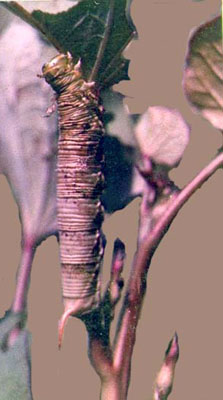
Sweetpotato
hornworm feeding on leaf (E. Vasquez).
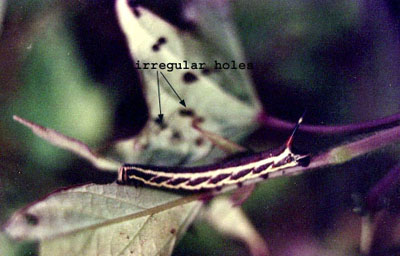
Young hornworm caterpillars produce roundish to irregular-shaped
holes.
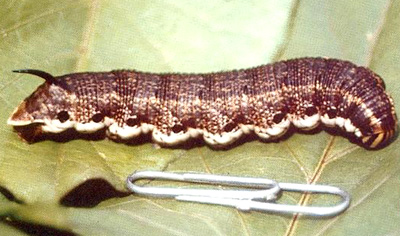
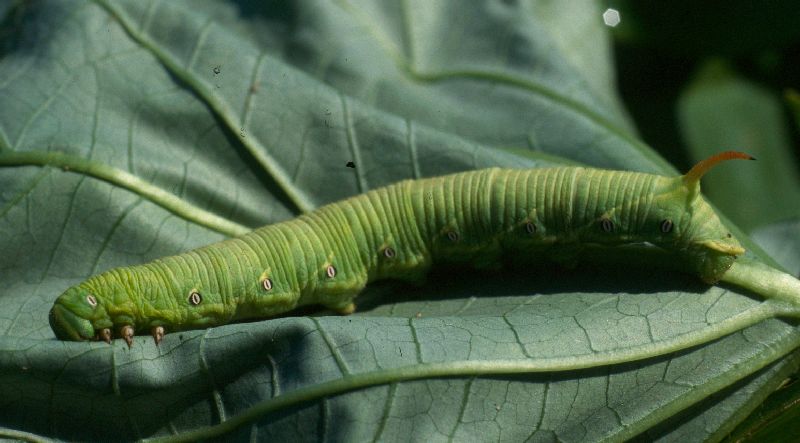
The caterpillars vary considerably in colour and markings (CIP, J.
O'Sullivan).
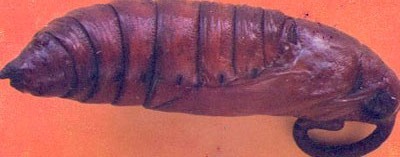
Pupa showing prominent curved proboscis.
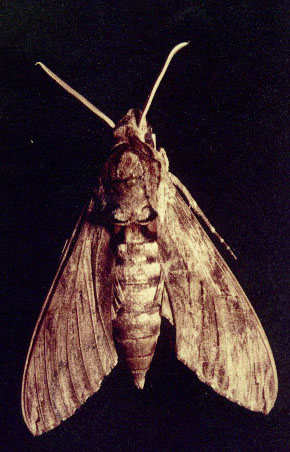
Adult hornworm or hawkmoth. |

